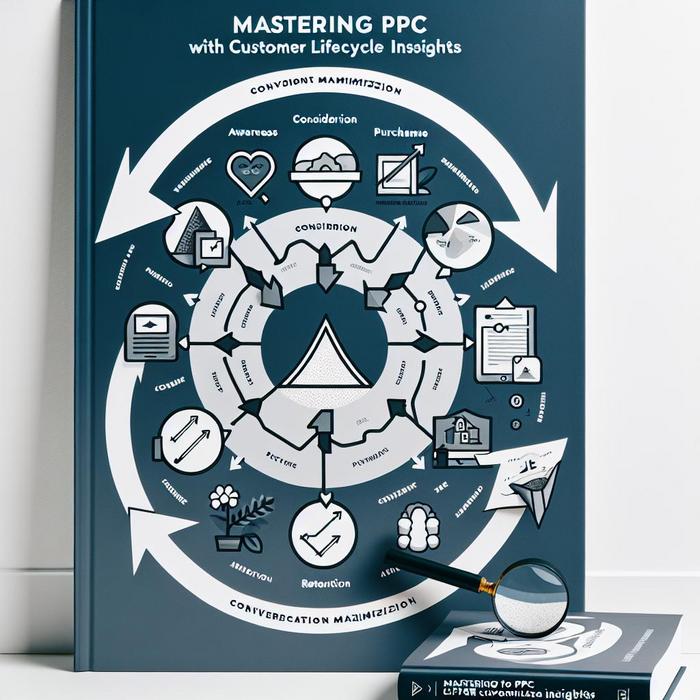Decoding the Superiority of Strategic Bid Techniques in PPC Mastery
The hunt for productive conversions is relentless. Large-scale companies and high-level executives are consistently seeking innovative strategies to drive substantial business growth. Given this landscape, strategic bid techniques are becoming the secret weapon for many digital marketing savants. Specifically, the focus is on a revenue-maximizing approach, an advanced method that seeks to optimize the total value generated from conversions.
PPC Hero dubs this as one of the most advanced Google Ads techniques that every digital marketer must master. Rigorously crafted, these techniques turn PPC campaigns into high-performing ones, helping companies out-step their rivals. But why is this approach so transformative, and how does it compare across major digital platforms like Google, Meta, and TikTok?
Google Vs. Meta: The Battle of PPC Conversions
Google and Meta, formerly Facebook, are two of the most prominent digital advertising platforms. Both offer extensive audience reach and sophisticated targeting features. However, their approach to revenue-maximizing bid techniques varies quite significantly.
Google’s strategy centers around maximizing the total value of conversions. By implementing this approach, companies have reported higher return on ad spend (ROAS) and superior conversion values. Meanwhile, Meta gives advertisers the power of dynamic ad bidding, which adjusts the bid amount based on real-time auction dynamics. Mastering ROI growth with effective LTV strategies can be a definitive guide to understand Meta’s bidding strategy.
TikTok: The New Entrant in the PPC Mastery Arena
TikTok is a growing newcomer, proving to be more than just a trendy social media app. It’s quickly emerging as a robust platform for advertisers, delivering impressive ROAS and user engagement levels.
Unlike Google and Meta, TikTok employs ‘Situational Bidding,’ offering advertisers an edge in ad placements through dynamic bid adjustments. By doing so, it provides the flexibility to optimize ad campaigns based on the advertiser’s priority, whether it’s maximizing conversions or optimizing the budget.
So, how can high-level executives utilize these platforms effectively to achieve their strategic goals? They can do it by connecting with audiences & mastering platform precision.
The Transformation Triggered by Advanced Bid Techniques
While each platform offers unique advantages, the revenue-maximizing approach eclipses traditional strategies. It optimizes spend based on the customer’s value, making every conversion fruitful.
Scandiweb emphasizes this transformation, revealing that companies who adopted this strategy saw a dramatic surge in ROAS, a critical marker of PPC success. Moreover, when implemented appropriately, it can lead to significant revenue growth, customer retention, and satisfaction. Businesses can learn more about these techniques from achieving customer satisfaction through retention techniques.
From Google to Meta to TikTok, each digital platform offers distinct ways to integrate this approach, allowing businesses to achieve new heights of success. The significant impact that this strategy has is undeniable, and the time for executives to incorporate this into their digital marketing plan is now.
Strategic Bid Techniques: Unlocking Growth Potential Across Multiple Digital Platforms
The power of innovative methodologies extends far beyond Google, Meta, and TikTok. Other prominent names in the digital ad space, such as Amazon and LinkedIn, are also leveraging the power of revenue-maximizing strategies. Let’s take a closer look.
Amazon, known for its data-driven ecosystem, utilizes advertising strategies that are both advanced and effective. It focuses on ensuring that every bid maximizes the advertiser’s revenue. Coupled with its rich array of audience data, Amazon has become a powerful player in PPC optimization, capable of delivering considerable return on investments. You can gain deeper insights into Amazon’s approach on m19’s blog on Amazon Ads Strategies
On the other hand, LinkedIn, the top social platform for professionals, offers something different for advertisers. While it may not be the first platform that comes to mind for PPC campaigns, it is a valuable tool for businesses seeking to reach a specific demographic. LinkedIn maximizes engagement by adopting an objective-based bidding model. It enables the formulation of campaigns that resonate with their target audience, ultimately leading to increased revenue generation.
Deciphering Complexities in Cross-Platform PPC Campaigns
Navigating through multiple platforms can be quite challenging, given the divergence in each platform’s approach to revenue-maximization. Every platform has its strengths, but none can cater to all needs. Therefore, selecting the most fitting platform involves recognizing the alignment of its advantages with your business objectives.
For instance, Google’s focus on maximizing total conversion value might be an excellent fit for businesses aiming to heighten ROAS. In contrast, companies seeking dynamic bid adjustments might find Meta or TikTok more suitable. Similarly, Amazon’s data-based approach could be favorable for businesses focusing on audience-specific campaigns, while LinkedIn’s target-driven model might match well with those aiming to increase user engagement.
Optimization Techniques: Polishing Your PPC Campaign Performance
However, merely choosing the right platform is not sufficient. The true value comes from effective utilization of the chosen platform’s capabilities. This requires a solid understanding of the optimization function, a central aspect of any strategic bidding technique.
PPC Mastery delineates the importance of monitoring profit within Google Ads and provide a detailed overview of how to do this effectively. On the other side, Brand Auditors offers a comprehensive piece on advanced Google Ads optimizations strategies to enhance your campaign performance.
Similarly, businesses must grasp the essence of seasonality in their optimization pursuits. Seasonality dramatically impacts returns on ad spending. Therefore, integrating seasonality bid adjustments could be highly beneficial. A comprehensive guide on how to maximize profit with seasonal bid adjustments can be found on this PPC Mastery blog.
Bridging the Gap: Achieving Success with Strategic Bid Techniques
To summarize, strategic bid techniques, specifically revenue-maximizing ones, hold the potential to transform your business’s digital marketing landscape. However, the key to unlocking this potential lies in choosing the right platform and understanding critical optimization techniques.
From maximizing total conversion value on Google to leveraging dynamic bid adjustments on Meta and TikTok, the opportunities are endless. The challenge rests with making informed decisions, but the rewards they reap – hiked ROI, increased customer satisfaction, and retention – are well worth the effort.
Maintaining updated knowledge is essential. By staying ahead of the curve, you can ensure you’re not just part of the race, but a formidable competitor transformation.











